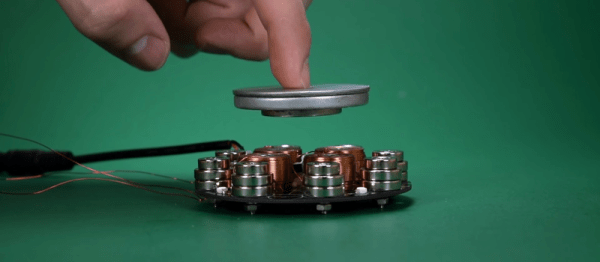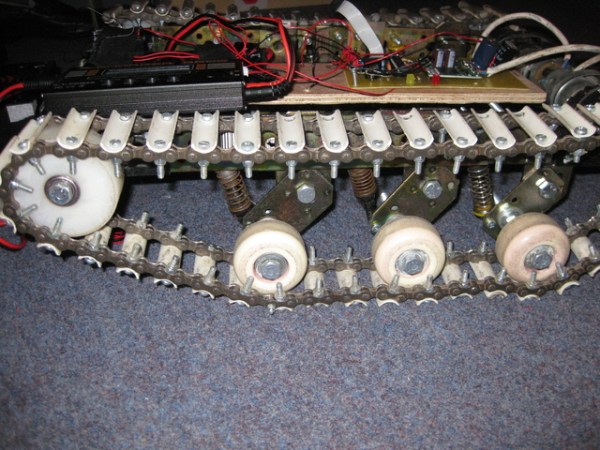Who doesn’t love magnets? They’re functional, mysterious, and at the heart of nearly every electric motor. They can make objects appear to defy gravity or move on their own. If you’re like us, when you first started grappling with the refrigerator magnets, you tried to make one hover motionlessly over another. We tried to position one magnet over another by pitting their repellent forces against each other but [K&J Magnetics] explains why this will never work and how levitation can be done with electromagnets. (YouTube, embedded below.)
In the video, there is a quick demonstration of their levitation rig and a brief explanation with some handy oscilloscope readings to show what’s happening on the control side. The most valuable part, is the explanation in the article where it walks us through the process, starting with the reason permanent magnets can’t be used which leads into why electromagnets can be successful.
[K&J Magnetics]’s posts about magnets are informative and well-written. They have a rich mix of high-level subjects without diluting them by glossing over the important parts. Of course, as a retailer, they want to sell their magnets but the knowledge they share can be used anywhere, possibly even the magnets you have in your home.
Simpler levitators can be built with a single electromagnet to get you on the fast-track to building your own levitation rig. Remember in the first paragraph when we said ‘nearly’ every electric motor used magnets, piezoelectric motors spin without magnets.
Continue reading “Hovering Questions About Magnetic Levitation”














